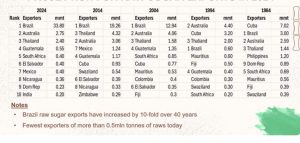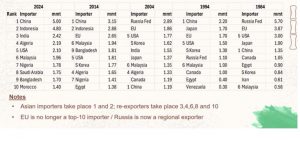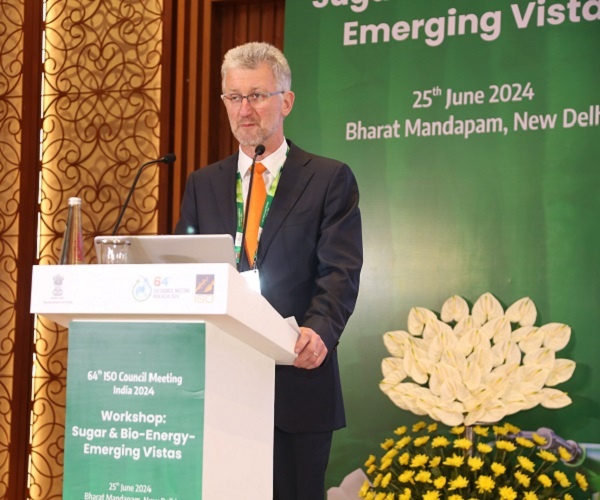During his address at the 64th ISO Council Meeting, Mr. Peter De Klerk, Senior Economist at ISO, comprehensively discussed the operational aspects of trade patterns, projections for raw sugar imports, and evolutionary developments in the industry. Mr. Klerk said, “The world of trade patterns obviously depends and is integral to the world of trade agreements. And we have seen in our recent study, 2018, looking at sugar in the evolving trade pact landscape, a huge number of new agreements and indeed also agreements that have been abandoned. These agreements are essential to trade; they’re also essential to an effective global market. The sugar market in its very nature is tertiary, by which we mean that in most countries, producers are focused on supplying the domestic market first, the preferential market second, and indeed then the world market third. In these preferential markets, we used to at the ISO look at the EU and UK as one specific area and the US as the other. For the broader market, though, it is essential to look at the logistics chain and what each supplier can provide to the destination. Here we have some critical factors to consider at origin. A trade pattern is only as good as the origin that you start from and the destination that takes it from your hands.”
Speaking on the logistics chain, he said, “Looking at the shipment itself, you need to find the right ship for the right cargo, both in terms of size, draft, and air draft. If anyone’s unfamiliar with that, it’s actually the height of the ship when it’s empty still needs to fit under the conveyor belt, otherwise you can’t put any sugar into the ship. The length alongside, or the length overall as it’s defined as, simply for parking the ship. Suitable routes become blocked, let’s say, by recent developments in the Red Sea, Suez area, but also water restrictions in the Panama Canal. Lastly, the vessel needs to be required at the right time in the right place. That, I can tell you from first-hand experience, is not always the case.”
“At the destination, there are voyages to be had to come actually to the terminal. The journey to Dayton Isle, London, for example, where I live nearby, is much longer than most people think. Similarly, the refineries in Bangladesh are some way away from the discharge port. At discharge itself, we have the questions of whether it’s operated by the ship, whether it goes into Hopper or the quayside, some discharge into barges. It is all possible, how it’s conveyed to the operational refinery or indeed its destination, and what is the capacity there. There are many things to consider and therefore many elements to trade that make a trade pattern a reliable and good trade pattern,” he further added.
He stressed that operationally, fast loading requires fast discharge. It might seem like an obvious thing to say, but it is still a challenging perspective. Different quality sugars are obviously preferred or permitted, and the two need to be a balancing act. The voyage needs to consider operational aspects like bunkering to form the backbone of the voyage. And let’s not forget that a voyage is only a certain duration, usually two months or so, given time for the ship to arrive, to get on berth, etc. But documentary resolutions can take much longer, up to two years.
Projection for raw sugar exports in 2024

Projection for raw sugar imports in 2024

Speaking on trade patterns and evolutionary developments, he said, “Ethanol trade, in terms of ethanol imports, obviously goes through poor tank terminals and is indeed found to be a good source trade pattern in many other countries and something I will promote at the end. The challenge for India, well, there is major growth expected in the ethanol program and it might indeed rely on ethanol imports if so permitted. The molasses supply, obviously, from a trade perspective, has come down for India, and that has meant that currently the market is really valuing molasses quite strongly. For sugar trading opportunities, we need to keep watch on demand for specific qualities, as well as the way in which exports, when they come, will be priced in the markets.”












